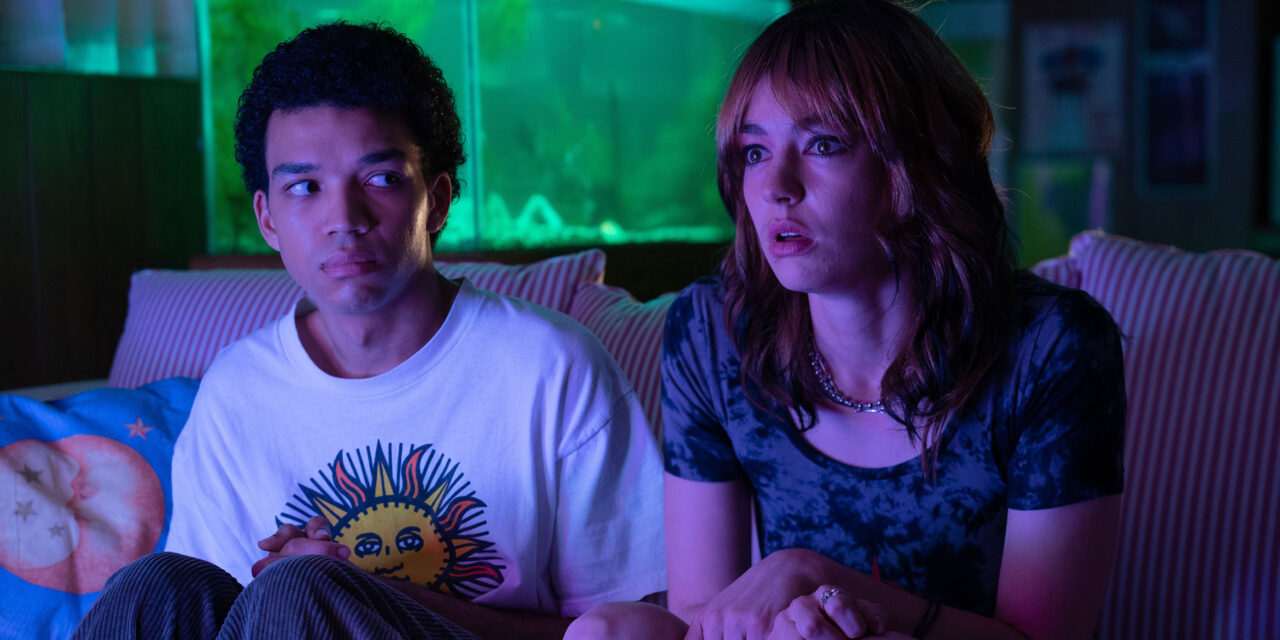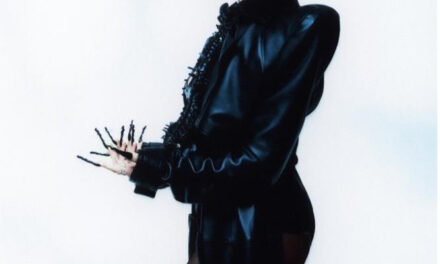Writer-director Jane Schoenbrun’s I Saw The TV Glow is not what I would call a happy film. The feeling of anxiety and dread only gets worse as you reach its conclusion. What you can be pleased about is that a piece of art depicting a certain kind of experience that is provocative, intelligent, inclusive, and fine-tuned to the fears of the trans community was created for the mass populous to see. There are almost an infinite amount of ways that you can portray how loneliness feels. That concept is different depending on who you are and how you identify as a person. Schoenbrun manages to piece their influences into a personal experience of being trapped between lives and how horrifying that can feel.
When we have little to identify with, we often latch onto television shows as a way to blissful escapism. If somebody in the real world can’t understand what I’m going through, surely I can see myself in a fictional character for an hour a week. Owen (Ian Foreman plays the younger version of this character; Justice Smith portrays the older) is a seventh grader in the 90s seeking a kindred spirit. His father, Frank (Fred Durst), is not necessarily the most admirable person — electing to rule over the family with an iron fist. His mother, Brenda (Danielle Deadwyler), means well but holds on to him in a suffocating manner. They are the type of parents that give Owen a strict bedtime. It just so happens that an ad for a show named The Pink Opaque catches his eye. It holds a far greater meaning once Owen meets Maddy (Brigette Lundy-Paine). She’s a loner two grades ahead of him who happens to be an avid watcher of the show. As they get over an initial awkward meeting, they both become friends through their love of the program.
On the surface, The Pink Opaque serves as a bridge for any youth mired in discontent while living in suburbia. A show within the film, Schoenbrun makes for a unique mix of Buffy, Goosebumps, and Are You Afraid of the Dark for this Snick adjacent show to come to life. In this show, two girls, Isabel (Helena Howard) and Tara (Lindsey Jordan), share a psychic link. They use it to ward off the monster of the week, but there’s an overarching villain named Mr. Melancholy. If you remember The Smashing Pumpkins ‘Tonight, Tonight” video, the character takes on the look of the stop-motion-esque look of the moon. As the girls use the link, they become more susceptible to attracting Mr. Melancholy to their locations. Even though Owen is a novice to the word, he is so lucky to have Maddy along this journey. She has an episode guide that’s practically glued to her hands and gives him VHS tapes to catch up on episodes.
The bond they share is a beautiful one, but it only covers the difficulties they are both experiencing in their home lives. For Owen, he starts to question who he is inside his own body. While Maddie is at first a reliable person to bounce those anxieties off of, her tumulous home life with an abusive parent leads to her disappearance for years. When they reunite, it’s in a space similar to The Roadhouse in Twin Peaks, complete with extended musical numbers. Maddie has found another life and name they claim is inside the show. For Owen, it’s hard to believe. Could The Pink Opaque morph into something realistic beyond being entrenched inside the (sometimes) more welcome word of scripted television? It’s a question we can ask ourselves as we ritualistically cling to a corner of media that speaks to us personally. Inside I Saw The TV Glow is a broad message of seeking acceptance and perhaps losing hold of it as we age. However, Schoenbrun unabashedly speaks to the difficulties of transition. Not so much completing it, but maybe the hellacious feeling of being caught between worlds.
Owen struggles with this notion of identity, and it doesn’t help his father dismisses his liking for The Pink Opaque as just being a “girl’s show.” While Maddie gets propelled into a better sense of who they want to be and can discard notions of the past, Owen cannot get out of his cocoon to breathe. It’s heartbreaking to witness, and Schoenbrun creates that uncertainty through colorful imagery, a flip in realities, and costume design, harkening back to those CW days. Both Smith and Lundy-Paine captivate from two different perspectives. With Smith, he takes Owen’s sadness and stuckness and increases it tenfold. Lundy-Paine elevates Maddy with a monologue in the film’s second half, a poetic and metaphorical depiction of transition. There’s the metaphor of burying your old self alive and coming out anew. It’s something Owen can’t quite get to the point of doing and, sadly, has to settle in purgatory.
As Owen gets older after The Pink Opaque‘s sudden cancellation without a resolution, he looks at the reruns through different lenses. Maybe the episodes were a little cheesier than he remembers and not as life-affirming. Or perhaps life has beaten him down so much that the magic of that connection has been taken away from him. That’s where the long-running show becomes a carnival house of horrors reflecting Owen’s own turmoil. I Saw The TV Glow is born from total emotional vulnerability at a time when certain types of people get to express it openly. It’s artistic as it is fearless and a scary mirror as it is a metamorphic revelatory process.
Photo Credit: A24













